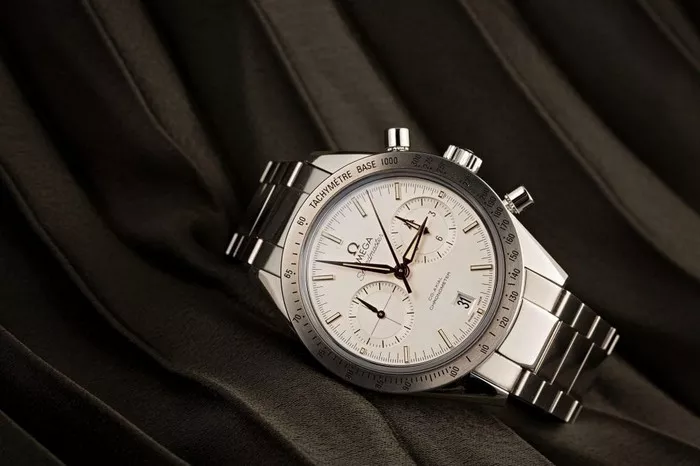Vintage Omega watches are prized for their craftsmanship and historical value. However, with their increasing popularity, the market has seen a rise in counterfeit and modified pieces. To ensure that you are purchasing an authentic vintage Omega watch, follow these detailed steps:
1. Understand the Omega Brand and Its History
Omega’s Heritage
Omega, founded in 1848, is renowned for its precision and innovation. Familiarize yourself with the brand’s history, key models, and milestones, such as its association with the Moon landing and its use in the Olympic Games. This knowledge will help you recognize authentic Omega features and identify potential red flags.
2. Examine the Watch Case
Serial Numbers
Locate the serial number on the case. Omega watches typically have serial numbers between 6 and 8 digits. These numbers should correspond to the production period of the watch. Cross-reference the serial number with Omega’s production records to verify its authenticity.
Case Back
Check the case back for engravings or stamps. Vintage Omega watches often have specific markings, including the Omega logo and model number. Ensure that these markings are crisp and well-defined. Counterfeit watches may have poorly executed engravings or incorrect details.
Case Material
Inspect the case material for consistency with Omega’s specifications. Omega uses high-quality metals like stainless steel, gold, and platinum. Verify the material type and ensure that it matches the watch’s model and era.
3. Inspect the Movement
Movement Caliber
Identify the movement caliber by examining the movement through the case back or by removing the case back. Omega movements are known for their precision and durability. Ensure that the movement matches the model and period of the watch. Cross-reference the movement caliber with Omega’s historical records.
Movement Stamps
Look for movement stamps or engravings. Omega movements often have specific stamps, such as “Omega” and the movement’s caliber number. Verify that these stamps are present and correctly placed.
4. Check the Dial and Hands
Dial Markings
Examine the dial for the Omega logo and model name. Vintage dials should have specific fonts and placement for these markings. Compare the dial with known authentic examples to ensure consistency.
Hands and Markers
Check the hands and hour markers for style and placement. Omega watches have distinct hand designs and marker styles that should match the model’s specifications. Counterfeit watches may have mismatched or incorrect hands and markers.
Luminescence
Inspect the luminescence on the hands and markers. Omega used different luminescent materials over the years, such as radium and tritium. Verify that the luminescence is consistent with the watch’s era and that it shows signs of aging appropriate to its age.
See Also: Do All Omega Watches Say Swiss Made
5. Assess the Watch’s Overall Condition
Originality
Evaluate the watch’s overall condition and originality. Authentic vintage Omega watches should have original components, including the case, movement, and dial. Be cautious of watches with replaced or non-original parts, as these may indicate tampering or counterfeit origin.
Documentation and Accessories
Check for original documentation, such as the warranty card and service records. Authentic Omega watches often come with a certificate of authenticity and other original paperwork. Verify the authenticity of these documents by checking their format and content.
6. Verify the Watch’s Provenance
Purchase History
Research the watch’s provenance, including its previous ownership and sales history. Authentic vintage Omega watches with verifiable provenance are more likely to be genuine. Request any available documentation or proof of purchase.
Expert Authentication
Consider having the watch professionally authenticated by an expert or reputable watchmaker. Experts can provide detailed analysis and verification of the watch’s authenticity, including detailed examination of its components and historical accuracy.
7. Use Online Resources and Forums
Omega Forums
Engage with online Omega watch forums and communities. Enthusiasts and experts often share valuable insights and information about vintage Omega watches. Use these resources to verify details and seek advice on specific models.
Online Databases
Access online databases and reference materials that provide information about vintage Omega watches. These resources can help you compare your watch with known authentic examples and verify its details.
8. Be Cautious with Price and Sellers
Pricing
Compare the watch’s price with similar authentic models on the market. If the price seems unusually low, it may indicate a counterfeit or modified watch. Research typical market values for the specific model and condition.
Seller Reputation
Evaluate the reputation of the seller. Purchase watches from reputable dealers or auction houses with a track record of authenticity. Avoid purchasing from unknown or unverified sources, as they may sell counterfeit or misleading items.
Conclusion
Authenticating a vintage Omega watch requires careful examination and a thorough understanding of the brand’s history and specifications. By following these detailed steps, you can confidently assess the authenticity of a vintage Omega watch and ensure that you are investing in a genuine piece of horological history.

